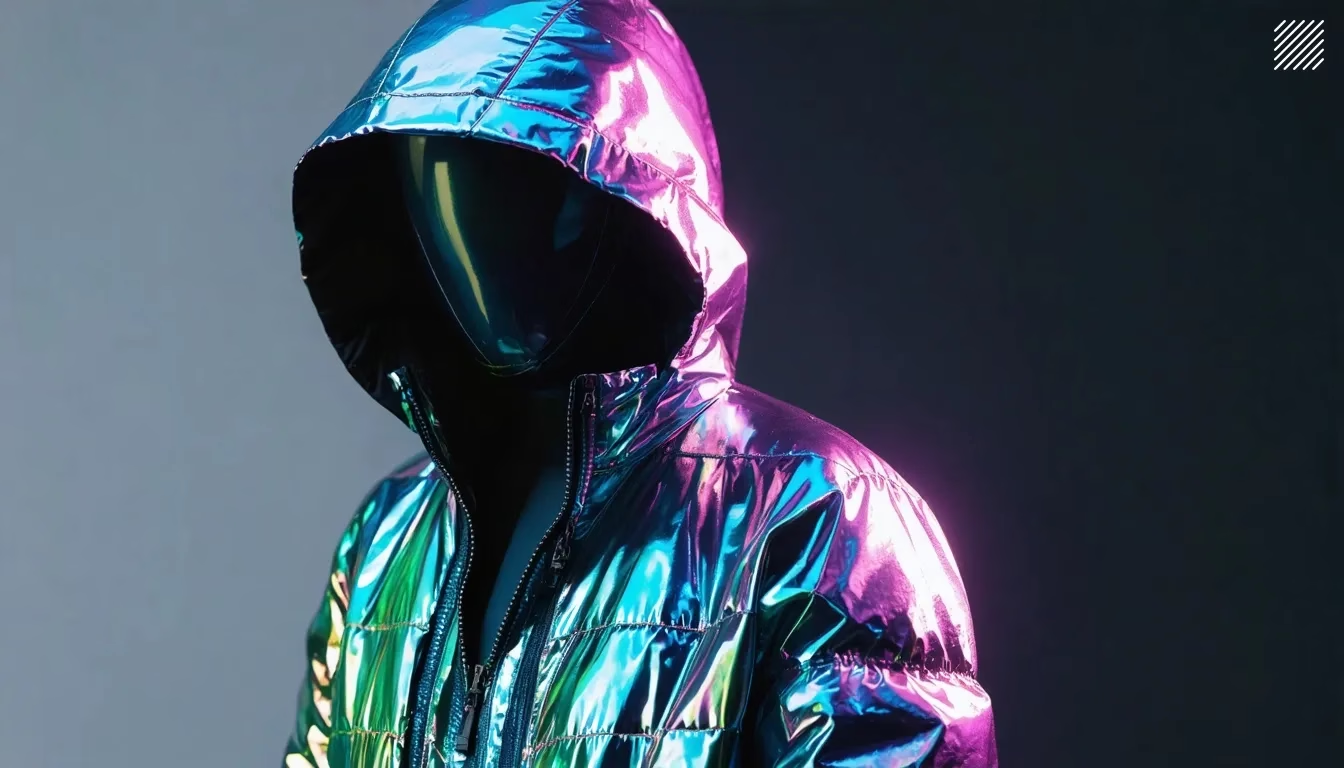
Blockchain’s Transformative Potential in the World of Fashion
Once primarily associated with the world of cryptocurrencies, blockchain has since expanded its reach, offering fashion brands and retailers a powerful suite of applications that can address a wide range of challenges, from supply chain transparency and authenticity verification to the rise of digital fashion assets and non-fungible tokens (NFTs).
As the fashion industry grapples with the need for increased traceability, sustainability, and consumer trust, blockchain technology is stepping up to the plate, providing a decentralized, transparent, and tamper-resistant platform that is transforming the way the industry operates.
Blockchain for Authenticity Verification and Anti-Counterfeiting
One of the most compelling applications of blockchain technology in fashion is its ability to provide unparalleled authenticity verification and anti-counterfeiting measures.
In an industry plagued by the proliferation of counterfeit goods, blockchain offers a robust solution that can effectively combat the sale of fake products and protect the integrity of fashion brands.
“Blockchain’s decentralized, tamper-resistant nature makes it an ideal tool for verifying the authenticity of fashion items,” explains Emma, the head of innovation at a leading luxury fashion house. “By creating a secure, transparent digital record of a product’s provenance and ownership history, we can give our customers the peace of mind that they are purchasing genuine, authentic goods.”
This blockchain-powered authenticity verification can be particularly beneficial for high-value items, such as luxury handbags, watches, and jewelry, where the risk of counterfeiting is especially high. By embedding unique digital identities within physical products or their accompanying certificates of authenticity, fashion brands can leverage blockchain to provide consumers with an immutable record of the item’s origin and journey through the supply chain.
“When a customer buys a luxury item from us, they want to be confident that they are getting the real deal,” says Emma. “Blockchain gives us the ability to offer that assurance, building trust and loyalty with our clientele.”
Beyond just verifying the authenticity of physical goods, blockchain technology can also play a crucial role in combating the growing threat of digital counterfeits. As the fashion industry continues to embrace the digital realm, with the rise of virtual fashion, digital collectibles, and non-fungible tokens (NFTs), blockchain can serve as a secure, tamper-proof ledger to track the ownership and provenance of these virtual assets.
“As we move deeper into the world of digital fashion, the need for robust authenticity verification becomes even more critical,” explains Emma. “Blockchain provides us with a reliable, transparent means of ensuring the scarcity and legitimacy of our virtual fashion offerings, protecting both our brand and our customers.”
Blockchain for Sustainable Fashion and Supply Chain Traceability
In addition to its applications in authenticity verification and anti-counterfeiting, blockchain technology is also poised to transform the fashion industry’s approach to sustainability and supply chain transparency.
“Sustainability has become a crucial imperative for the fashion industry, as consumers demand more transparency and accountability from the brands they support,” says Emma. “Blockchain offers us a powerful tool to address these concerns and build a more sustainable, traceable fashion ecosystem.”
Tracing the Origin and Journey of Fashion Goods
One of the primary ways in which blockchain is enhancing sustainability in fashion is through its ability to provide end-to-end traceability of products throughout the supply chain. By creating a secure, decentralized digital ledger that records the origin, processing, and distribution of raw materials, components, and finished goods, blockchain enables fashion brands to offer unprecedented levels of transparency to their customers.
“With blockchain, we can give our customers a window into the entire lifecycle of our products, from the sourcing of sustainable raw materials to the ethical manufacturing and responsible distribution of our goods,” explains Emma. “This level of traceability not only builds trust with our customers but also helps us identify and address any potential issues or inefficiencies within our supply chain.”
Moreover, this blockchain-powered supply chain traceability can also play a crucial role in verifying the provenance and authenticity of sustainable and ethically-sourced fashion items, further bolstering consumer confidence and brand loyalty.
Incentivizing Sustainability and Ethical Practices
Beyond just enhancing traceability, blockchain technology also has the potential to incentivize more sustainable and ethical practices throughout the fashion supply chain. By leveraging smart contracts and decentralized applications (dApps), fashion brands can create transparent, tamper-proof systems that reward suppliers and manufacturers for adhering to environmental and social responsibility standards.
“Imagine a scenario where each step of the supply chain is recorded on a blockchain, and suppliers are automatically compensated for meeting pre-defined sustainability and labor benchmarks,” says Emma. “This not only encourages more responsible practices but also helps us, as a brand, to better monitor and validate the sustainability claims we make to our customers.”
This blockchain-powered approach to incentivizing sustainability can also extend to the consumer level, with fashion brands offering rewards, discounts, or even digital collectibles to customers who engage in responsible consumption habits, such as reselling or recycling their garments.
“By linking these sustainability initiatives to blockchain-based incentive structures, we can create a more circular, collaborative fashion ecosystem that benefits all stakeholders – from suppliers and manufacturers to retailers and consumers,” explains Emma.
Blockchain and the Rise of Digital Fashion Assets
As the fashion industry continues to embrace the digital realm, blockchain technology is also playing a pivotal role in the emergence of new, innovative fashion assets and experiences.
“The world of digital fashion is rapidly evolving, and blockchain is at the forefront of this transformation,” says Emma. “From virtual garments and accessories to one-of-a-kind digital collectibles, blockchain is enabling us to create new forms of value and engage with our customers in unprecedented ways.”
Non-Fungible Tokens (NFTs) and Digital Fashion
One of the most prominent applications of blockchain in the digital fashion space is the rise of non-fungible tokens (NFTs). These unique, verifiable digital assets are revolutionizing the way fashion brands can create, distribute, and monetize virtual fashion items.
“NFTs allow us to imbue digital fashion assets with scarcity, authenticity, and ownership – attributes that are critical for establishing value in the virtual realm,” explains Emma. “By leveraging blockchain technology to create truly unique, one-of-a-kind digital fashion pieces, we can offer our customers exclusive, collectible items that transcend the physical world.”
These blockchain-powered digital fashion NFTs can take many forms, from virtual garments and accessories that can be worn in metaverse environments to unique, digitally-rendered fashion illustrations and animations. By tapping into the growing demand for digital self-expression and personalization, fashion brands can create new revenue streams and deepen their connections with tech-savvy, digitally-native consumers.
“The beauty of NFTs in fashion is that they allow us to experiment with innovative, outside-the-box ideas that simply aren’t possible in the physical world,” says Emma. “We can push the boundaries of creativity, sustainability, and exclusivity, all while building a new generation of loyal, engaged customers.”
Virtual Showrooms and Digital Fashion Experiences
Beyond the realm of NFTs, blockchain technology is also enabling fashion brands to create immersive, blockchain-powered virtual showrooms and digital fashion experiences.
“Imagine a future where customers can step into a fully-realized, blockchain-secured virtual flagship store, browse curated collections, and even try on digital garments using advanced AR and VR technologies,” explains Emma. “It’s a level of engagement and interactivity that transcends the limitations of the physical retail space.”
By leveraging blockchain to secure the digital assets, transactions, and user identities within these virtual fashion experiences, fashion brands can provide their customers with a seamless, trusted, and highly personalized shopping journey – all while tapping into new revenue streams and reducing their environmental footprint.
“As the line between the physical and digital worlds continues to blur, blockchain will play a crucial role in enabling fashion brands to create truly innovative, immersive experiences that captivate and delight their customers,” says Emma.
Ethical Considerations and the Future of Blockchain in Fashion
As the fashion industry continues to explore the transformative potential of blockchain technology, it is essential to address the ethical considerations that come with this innovative application of distributed ledger systems.
Issues of data privacy, energy consumption, and the potential for unequal access must be carefully navigated to ensure that the benefits of blockchain-powered solutions are realized in a responsible and equitable manner.
Data Privacy and Transparency
The deployment of blockchain-based systems in fashion supply chains and digital fashion experiences relies on the collection and sharing of vast amounts of data. Fashion brands must prioritize data privacy and transparency to build trust with their stakeholders and uphold their ethical obligations.
“At the heart of our blockchain strategy is a steadfast commitment to data privacy and responsible data governance,” says Emma. “We have implemented robust data protection frameworks and clear communication to our partners and customers about how their information is being used and secured on the blockchain.”
Environmental Impact and Energy Consumption
Another critical consideration for the fashion industry’s use of blockchain technology is the potential environmental impact, particularly surrounding the high energy consumption associated with some blockchain networks.
“As an industry that is already grappling with significant sustainability challenges, the last thing we want to do is exacerbate our environmental footprint through the adoption of blockchain,” explains Emma. “That’s why we’re carefully evaluating blockchain protocols that prioritize energy efficiency and eco-friendly practices, ensuring that our applications of this technology are truly aligned with our broader sustainability goals.”
Inclusive Access and Equity
Finally, the fashion industry must also consider the issue of equitable access to blockchain-powered solutions, particularly for smaller brands, independent designers, and marginalized communities within the supply chain.
“It’s crucial that we don’t create a scenario where the benefits of blockchain in fashion are only accessible to the largest, most well-resourced players,” says Emma. “We’re actively exploring ways to democratize this technology, empowering even the smallest of fashion businesses to leverage the power of blockchain to enhance their operations and engage their customers.”
This might involve the development of user-friendly, low-cost blockchain platforms, the deployment of educational initiatives, and the fostering of collaborative, ecosystem-level approaches to blockchain adoption in the fashion industry.
The Future of Fashion: Blockchain-Powered Authenticity, Sustainability, and Digital Innovation
As the fashion industry continues to evolve, the integration of blockchain technology is poised to become an increasingly prominent and transformative force. From combating counterfeiting and enhancing supply chain traceability to enabling new forms of digital fashion assets and immersive virtual experiences, this innovative distributed ledger technology is redefining the way the industry operates.
By embracing the power of blockchain-powered authenticity verification, sustainable incentive structures, and the rise of digital fashion, fashion brands can cultivate deeper, more meaningful relationships with their customers, delivering a level of transparency, trust, and creative expression that was previously unimaginable.
At the same time, it is crucial that the fashion industry addresses the ethical considerations surrounding data privacy, environmental impact, and inclusive access to ensure that the benefits of blockchain-driven innovation are realized in a responsible and equitable manner.
As the fashion industry stands at the forefront of this blockchain revolution, the future holds the promise of a more transparent, sustainable, and digitally-empowered industry – one that seamlessly blends the physical and virtual realms, empowering brands, creators, and consumers to redefine the boundaries of what is possible in the world of fashion.


